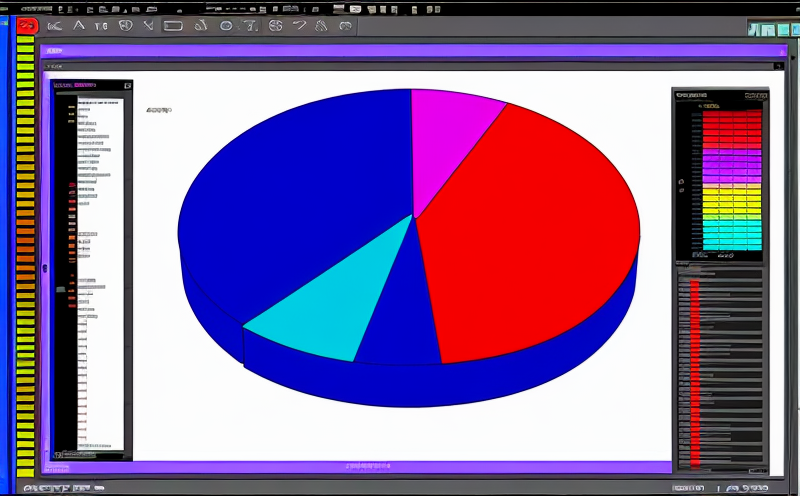DIN 51007 Differential Thermal Analysis of Materials
The DIN 51007 standard specifies the method for performing differential thermal analysis (DTA) to determine the heat effects associated with physical and chemical changes in materials. This technique is widely used by quality managers, compliance officers, R&D engineers, and procurement professionals to ensure that the materials they work with meet specified standards.
Differential Thermal Analysis involves heating a sample at a constant rate while comparing it against an inert reference material. The difference in heat flow between these two materials is measured as a function of temperature. This method allows for precise identification of phase transitions, decomposition processes, and other thermal events that occur within the sample.
The primary application of DIN 51007 lies in its ability to detect subtle changes in material properties during heating or cooling cycles. These changes can indicate critical points such as melting temperatures, crystallization, glass transition points, and more. By understanding these thermal behaviors, professionals in various industries can optimize production processes, ensure product quality, and comply with regulatory requirements.
The testing process begins with thorough preparation of the sample. Depending on the material type, this may involve grinding, sieving, or other treatments to achieve a consistent particle size distribution suitable for DTA analysis. Properly prepared samples are then weighed accurately and placed into the DTA instrument's furnace chamber.
Once inside the instrument, the sample is subjected to controlled heating at a specified rate (typically between 10°C/min and 50°C/min). Simultaneously, an inert reference material undergoes identical treatment conditions. The heat flux difference between the two is continuously monitored using sensitive thermal sensors.
The resulting data provides detailed insights into the thermal properties of the sample. Graphs depicting the temperature vs. heat flow relationship are generated, highlighting specific peaks that correspond to different phase transformations or decomposition events. These graphical representations serve as a valuable tool for interpreting the test results and making informed decisions about material selection and process optimization.
Quality managers benefit from DIN 51007 by gaining deeper knowledge of their materials' thermal characteristics, which aids in maintaining consistent product quality across batches. Compliance officers ensure adherence to relevant industry standards through rigorous testing according to this standard. R&D engineers leverage DTA data to innovate new products and improve existing ones based on empirical evidence obtained from these analyses.
For procurement teams, understanding the thermal behavior of potential suppliers' materials helps in selecting reliable partners who consistently deliver high-quality goods. Additionally, DIN 51007 supports regulatory compliance by providing robust scientific backing for claims made regarding product performance and safety.
Why Choose This Test
Selecting DIN 51007 Differential Thermal Analysis offers numerous advantages over other testing methods. One key benefit is its ability to identify multiple thermal events simultaneously, offering comprehensive insights into a material's behavior under heat stress conditions.
- Accurate detection of phase transitions and decomposition processes.
- Precise measurement of the onset temperatures for these changes.
- Non-destructive nature allowing retesting if necessary.
- Compatibility with diverse sample types including solids, liquids, and pastes.
This multi-faceted approach ensures thorough evaluation of materials' thermal stability, which is crucial for meeting stringent quality control expectations. Moreover, since DIN 51007 aligns closely with international standards like ISO/IEC standards, it enhances the credibility and acceptability of test results internationally.
Choosing this method also simplifies regulatory compliance efforts by providing clear guidance on how to conduct tests consistently across different laboratories. This uniformity contributes significantly towards achieving reliable outcomes that can be confidently used for decision-making processes within organizations.
Quality and Reliability Assurance
- Demonstrates adherence to rigorous scientific methodology ensuring accurate results.
- Supports continuous improvement initiatives through ongoing quality assessments using this standardized approach.
- Facilitates traceability of data back to original samples, enhancing auditability and transparency.
Differential Thermal Analysis according to DIN 51007 plays a vital role in maintaining high standards of quality assurance within laboratories. By employing this technique, organizations can enhance their reputation for delivering reliable products and services, thereby building trust with customers and stakeholders alike.
International Acceptance and Recognition
DIN 51007 Differential Thermal Analysis enjoys widespread recognition among global standards bodies. It is harmonized with various international standards such as ISO, ASTM, EN, and IEC, ensuring compatibility and acceptability across different regions.
Many countries have adopted DIN 51007 as a reference method for evaluating materials' thermal properties due to its robustness and reliability. Laboratories accredited by organizations like ANSI or UKAS typically include this test in their suite of services because it meets stringent quality assurance criteria set forth by these bodies.
The international acceptance of DIN 51007 also extends to academia where researchers often use DTA data generated from this standard for further studies. This broad recognition underscores the importance and value of adhering to this particular protocol when conducting differential thermal analysis.





